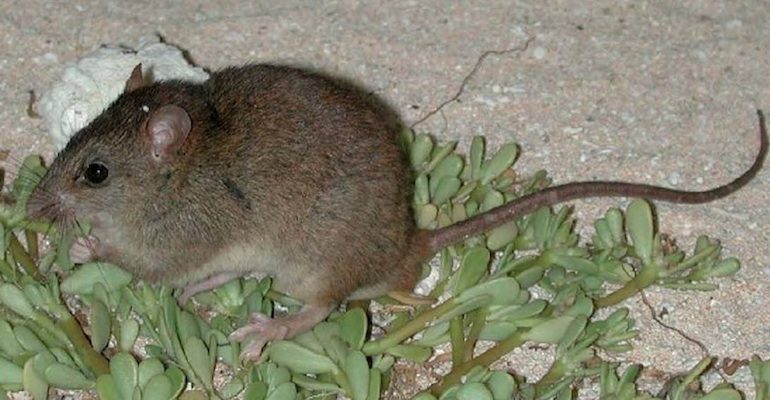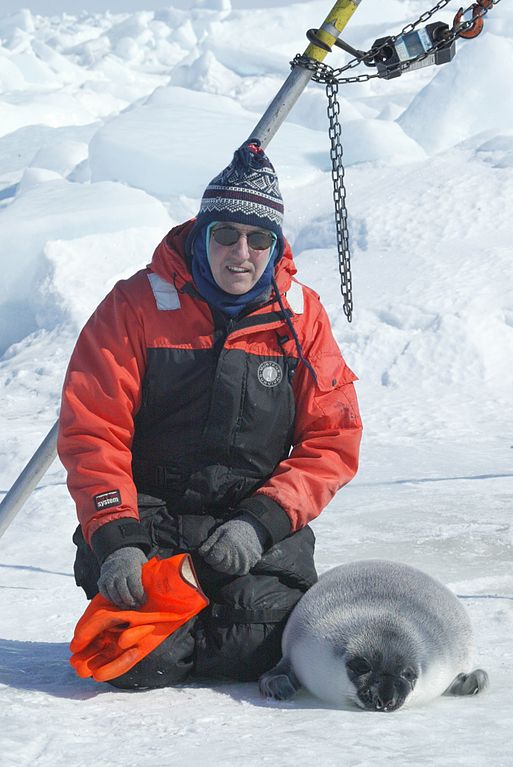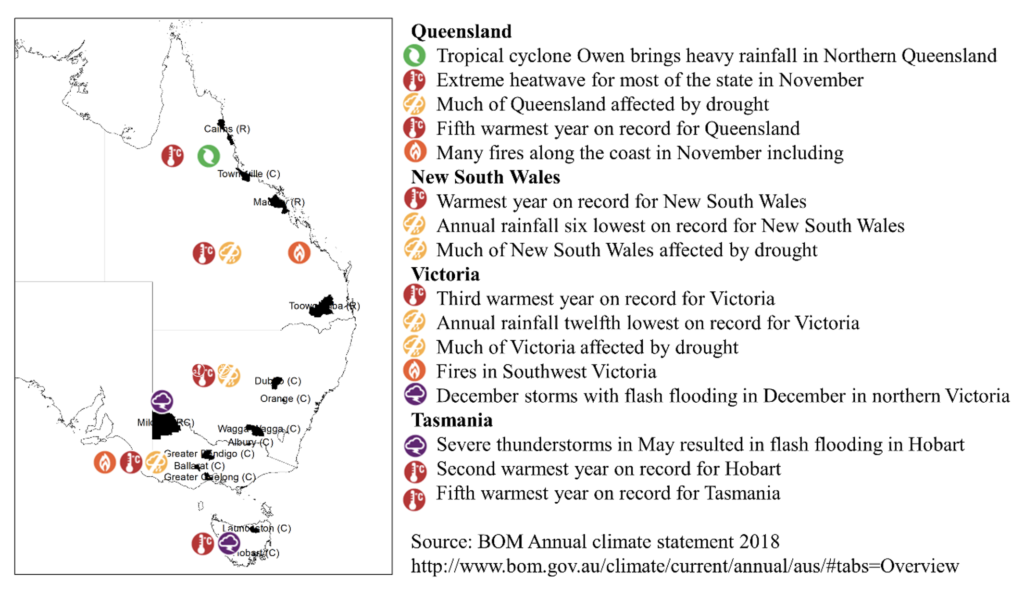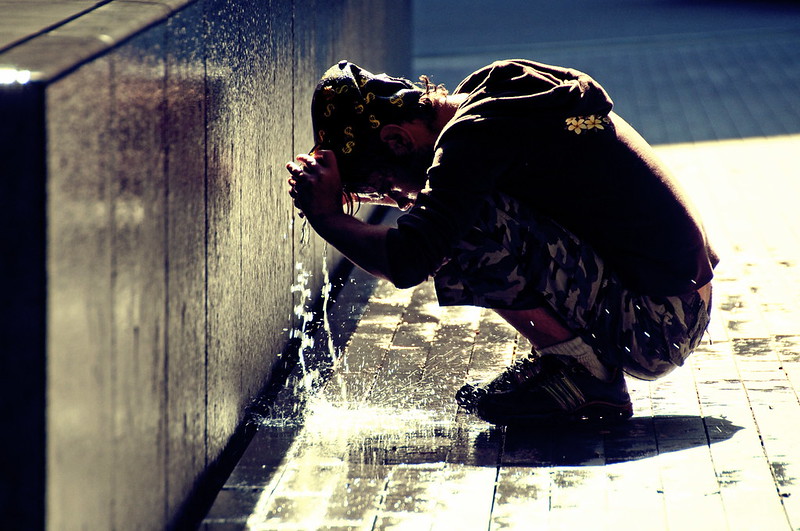
Dr Vanessa Adams
Questions answered by this expert
What will happen to animals? The answer is- it depends. Some will move around to find new places to live. Some will evolve to the new climate conditions where they currently live. And some species will die or go extinct. Let’s look at how species might respond and why this means that even with evolution and moving, some will still die.
Species are evolving and moving in response to climate change. Examples of evolution are changes in how a species can tolerate extreme temperatures – known as thermal ranges. Some species will die at particular temperatures. For example in late 2018 many flying foxes died in an extreme heat wave in northern Australia. Marine heatwaves result in mass coral reef deaths.

But if individual plants or animals within a species happen to have or abilities to survive at higher temperatures, then, over time, those traits will become widespread within the species, because those individuals survive and reproduce. In fact, scientists are selectively breeding coral reefs for their ability to tolerate higher temperatures and then farming these corals to improve the health of the Great Barrier Reef.
Some species can also move around in order to follow suitable climate conditions (like the right temperature or rainfall for them). Plants use wind to move seeds kilometres away, birds can fly long distances to find the next suitable tree hollow to live in, and mammals can follow habitat corridors like rivers and tree lined fences to find the next forest to live in. In this way, some species can continue to adapt and follow changes in their habitat to survive. Scientists call this ‘species on the move’ and it’s a big area of current research. These scientists estimate that so many species will move or redistribute themselves, the types of plants and animals you see out your back door today may well be different in the future.
But evolving, or moving, takes time. Evolution is a multi-generational process. And species tend to move anywhere from a few metres to 10s of kilometres each year depending on how big and how mobile they are. If climate change outpaces the speed at which species can move or change, then they are at risk of dying.
One study estimated that if we follow our current, business-as-usual trajectory of climate change, which is projected to lead to a 4.3°C temperature rise, climate change would threaten one in six species (16%). This could as much as double our extinction rates.
The species that are most likely to be at risk of extinction are those that are on islands (like New Zealand and Australia) where there’s not enough space for species to move or track their preferred climate. So here in Australia, we will have more species extinctions due to climate change relative to other parts of the world.
This is one of many reasons why people are calling for governments to limit climate change to 1.5°C, by ‘decarbonising’ our economy – or stopping emissions of CO2. If we do this, we can reduce the rates at which plants and animals become extinct.
Plants and animals are threatened by lots of things like habitat loss from land clearing, or being hunted, fished or harvested. On top of these pressures are climate change impacts.
Because there are so many interacting threats to biodiversity, we haven’t yet attributed many species’ extinctions only to climate change. Species that we have lost to date from climate change are species that occur only in one place, so they are very rare, and those places are exposed to immediate climate impacts such as flooding and sea level rise.
The Bramble Cay Melomys was an Australian rodent that occurred only on one island in the Torres Strait. In 2016, it became the first recorded species extinction attributed to human induced climate change. The small sand island it lived on was affected by sea level rise and storm events. The extinction record by the State of Queensland said that extinction was caused by "ocean inundation of the low-lying cay, very likely on multiple occasions, during the last decade, causing dramatic habitat loss and perhaps also direct mortality of individuals" (1). There are likely other species that have been lost to a similar fate.

The IUCN Red List of species is the best source for understanding global threats to species. Expert have listed climate change as a cause of decline for 19% of all species listed as near threatened or threatened. Climate change impacts that threaten species include increases in storms, flooding, extreme temperatures, drought, and sea level rise.
As an example – Hooded seals are a species threatened directly by climate change. Their population has dropped in abundance by 90% in the northeastern Atlantic Arctic over the last 20 years. This decline is attributed to loss of sea ice which has reduced the number of places available for resting and raising pups.

Looking into the future – One study estimated that if we follow our current, business-as-usual trajectory of climate change, which is projected to lead to a 4.3°C temperature rise, climate change would threaten one in six species (16%). This could as much as double our extinction rates.
This is one of many reasons why people are calling for governments to limit climate change to 1.5°C, by ‘decarbonising’ our economy – or stopping emissions of CO2. If we do this, we can reduce the rates at which plants and animals become extinct.
We are experiencing climate change here and now. Some of the changes might be subtle things that we don’t readily notice – like small changes in average summer day time temperatures, or the number of extreme heat days a year. Each decade since 1980 has been warmer than the last - but often people don't remember how these things were different in the past - we suffer from ‘shifting baselines’ which means we only recollect what happened in the recent past like last week or last year as a comparison for what we experience today. This means that these subtle changes may be hard to notice.
Some of the changes we are experiencing are actually much more dramatic – these include extreme weather events like unusual and severe storms or prolonged heat waves. Each year in Australia we are breaking lots of records. The Bureau of Meteorology puts out a great annual summary that you can refer to but I created a map collating notable examples for 2018 that gives you an idea of the types of climate change impacts and events we are currently experiencing.

The impacts from these extreme events are being felt in different ways depending on who you are and where you live. But as examples – if your home is in a low lying coastal area the cost of flood insurance is often too high for the average home owner. And councils and state governments are considering planned retreats from the coast in terms of where they will support recovery from flood events versus where they will encourage home owners to move to as an alternative. Similar experiences are being felt in Australia’s fire prone city fringes where home owners have to monitor high fire danger index days and consider moving out of their homes on those days to protect themselves.

Other ways that individuals and families are already feeling the impacts are through their home environments. Many are finding their homes aren’t built for our new extreme heat days in summer and so they have to install air conditioners or run the AC for much longer periods of time resulting in substantial electricity bill increases. Individual, council, and state led adaptation measures are needed to make sure our built environments can cope with these changes from floods, fires, storms through to changes in heat.










